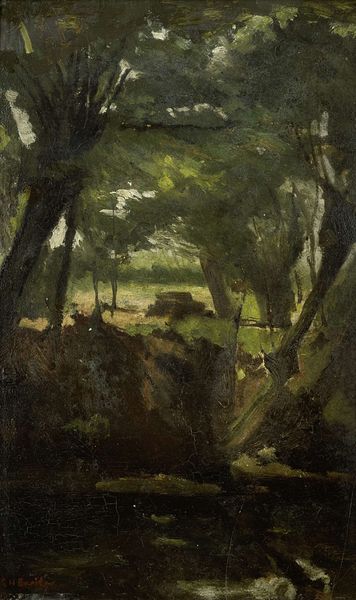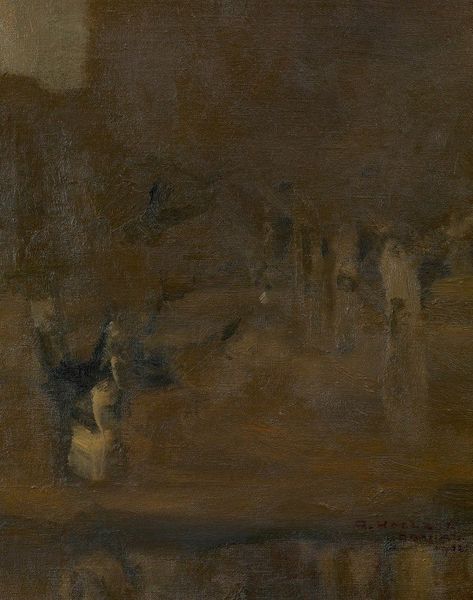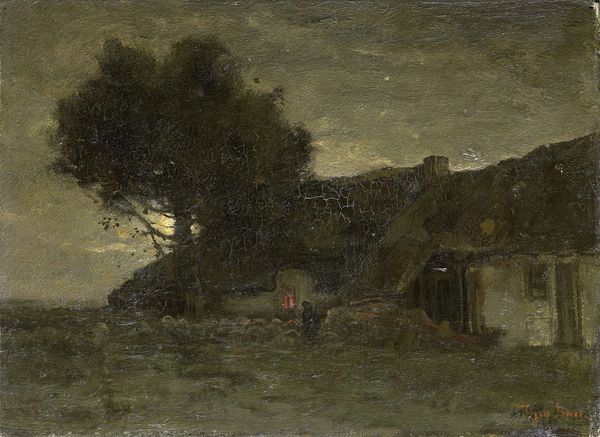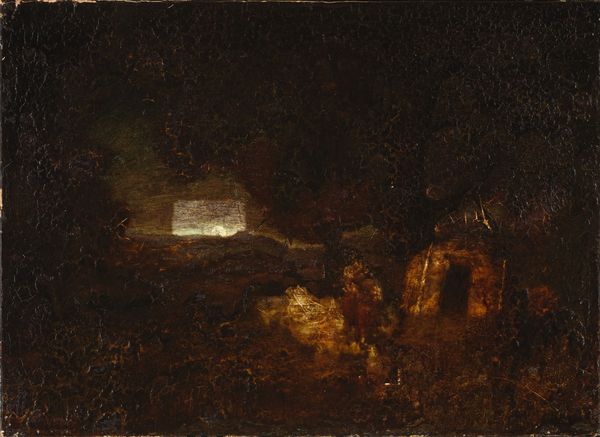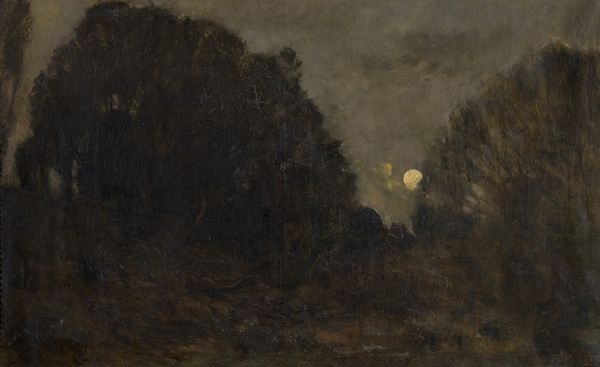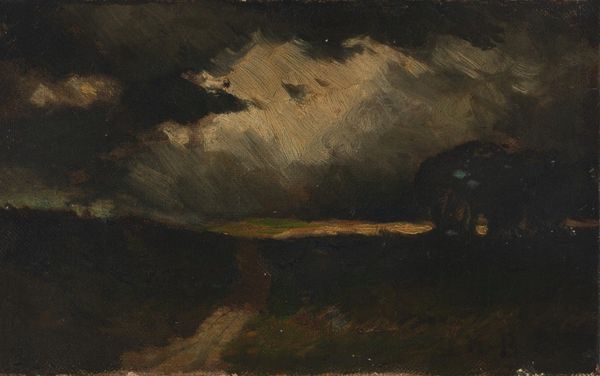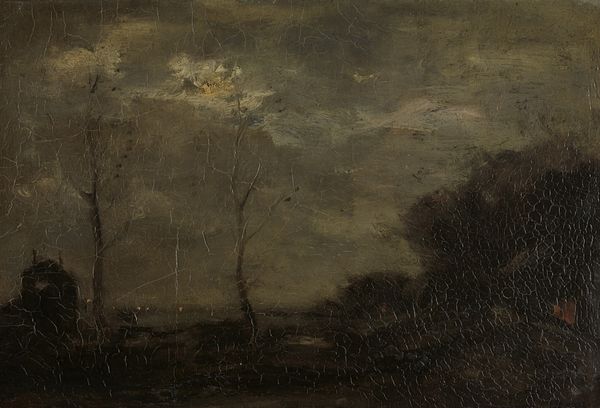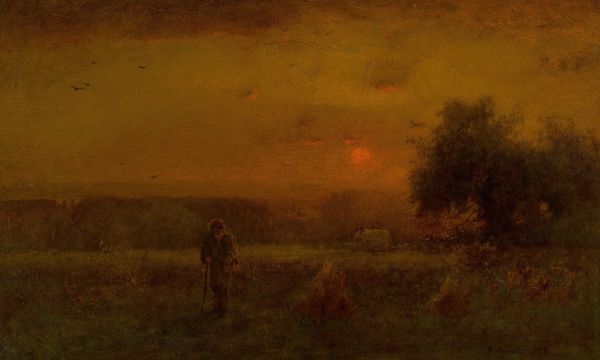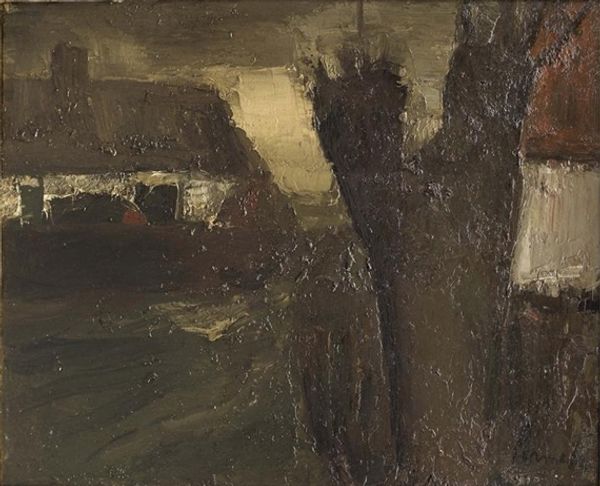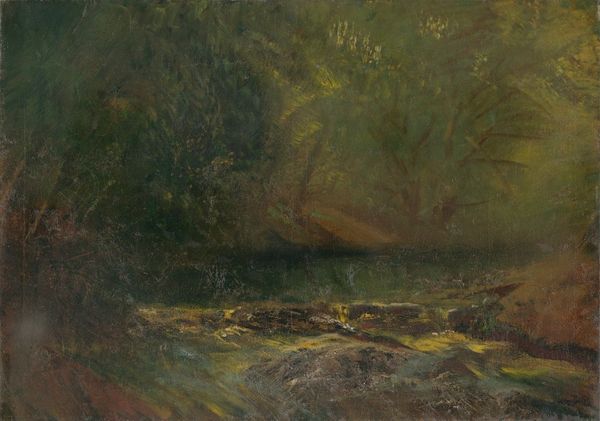
#
rough brush stroke
#
charcoal drawing
#
possibly oil pastel
#
oil painting
#
acrylic on canvas
#
underpainting
#
painting painterly
#
mixed medium
#
watercolor
#
unfinished
Dimensions: height 22.2 cm, width 29.5 cm, thickness 2.5 cm, depth 7.8 cm
Copyright: Rijks Museum: Open Domain
Editor: This is "At Sundown," painted in 1889 by Arthur Hawksley, and it seems to be an oil painting. The mood is quite somber, almost melancholic, with that dense, shadowy foliage. I am struck by the way the buildings and nature seem to meld. How do you interpret this work? Curator: It's a funny little world Hawksley pulls us into, isn’t it? It feels so heavy with atmosphere, that amber gloom. The unfinished quality almost enhances that feeling, like a memory half-grasped. It’s not about capturing the scene perfectly, it's about evoking a sensation. A fading light. What do you make of that clearing or erasure to the left? Almost looks like a ghostly blob there, doesn't it? Editor: Yes, that's very noticeable! I did wonder if that area was unfinished or had been damaged, perhaps? It creates a strange focal point that kind of draws your eye away. Curator: Exactly! It introduces a delicious tension between what's present and what’s absent. Hawksley teases with absence, with that eerie blob it creates a feeling of impending dark or loss perhaps. It might be worth keeping an eye out for what else that painter has erased. It's so like a mind playing tricks on one's memory and is somehow, incredibly intimate for that fact alone! What’s *your* takeaway? Editor: I hadn't considered it that way, as intentional erasure, and it makes the image much more compelling. That melancholy I felt initially now feels more layered, a bittersweet memory perhaps. Curator: Perhaps our Hawksley created this artwork for their eyes only, a melancholic glimpse of beauty in something that fades. It becomes incredibly evocative, doesn’t it? Makes me want to wrap up in a blanket and brood a little, if I'm honest.
Comments
No comments
Be the first to comment and join the conversation on the ultimate creative platform.
